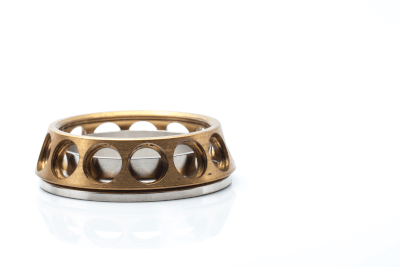What Is a Retainer?

A retainer, used in bearings, plays a crucial role in separating the balls within the bearing, enabling them to rotate at high speeds.
The term “retainer” varies in its application across different industries. In bearings, a retainer, also known as a mechanical friction retainer, is designed to reduce the friction between balls, facilitating smoother and faster rotation.
Uses of Retainers
Retainers are essential in bearings, creating a necessary space between the outer and inner rings. This spacing prevents the balls from contacting adjacent ones. Two common types of retainers are steel retainers and resin retainers. Selecting the right material is crucial and depends on the manufacturing method and the specific operating environment, requiring consultation with the bearing manufacturer.
Principles of Retainers
Retainers significantly influence the performance of bearings:
1. Without Retainers
In the absence of retainers, bearings experience increased friction due to ball-to-ball contact. This leads to energy loss, higher noise levels, and accelerated wear. As a result, bearings without retainers are typically used in applications involving low-speed rotation.
2. With Retainers
Retainers prevent direct contact between balls, thereby reducing wear, energy loss, and noise. This makes high-speed rotation feasible.
3. Types of Retainers
Retainers are categorized based on bearing types: ball type and roller type. Ball-type bearings use retainers, while roller-type bearings use cages.
Other Information on Retainers
1. Retainers for General Use
While retainers are commonly associated with professional equipment, they are also used in everyday applications like bicycle bearings to hold the balls in place. Bicycles, especially around cranks and handlebars, often employ ball-type bearings and retainers. These parts require careful maintenance, sometimes necessitating professional repair services.
2. Causes of Retainers Breakage
Retainer damage can result from excessive vibration, shock, or moment loads that tilt the rotating shaft. Adequate lubrication with the right lubricant is essential for smooth operation. Installation errors, such as misalignment, also contribute to damage and should be minimized. Additionally, foreign objects or installation scratches can cause damage, as retainers are not designed to withstand significant external forces or contact with other parts.